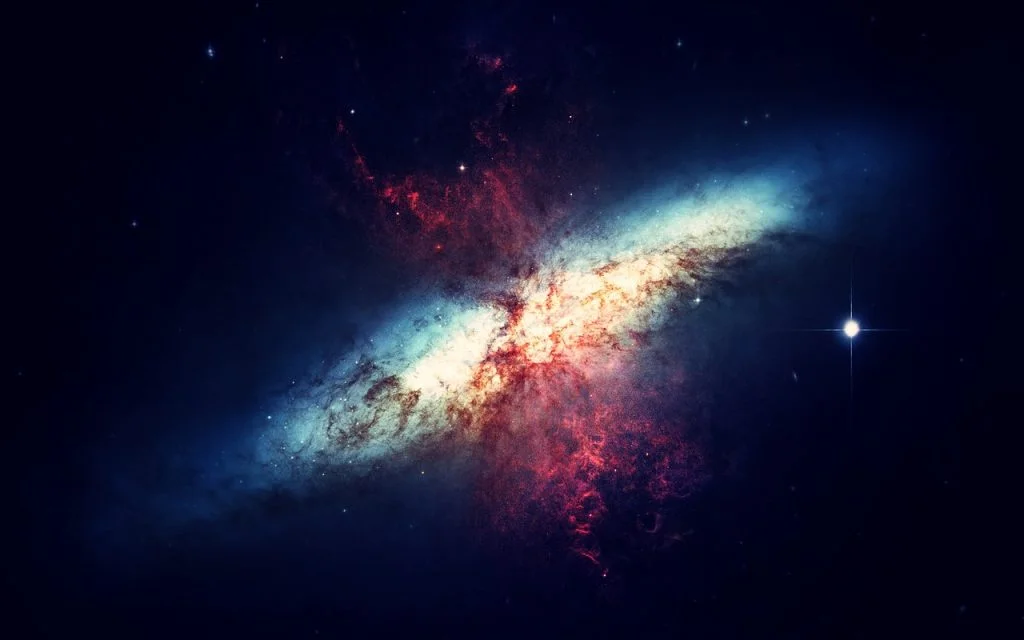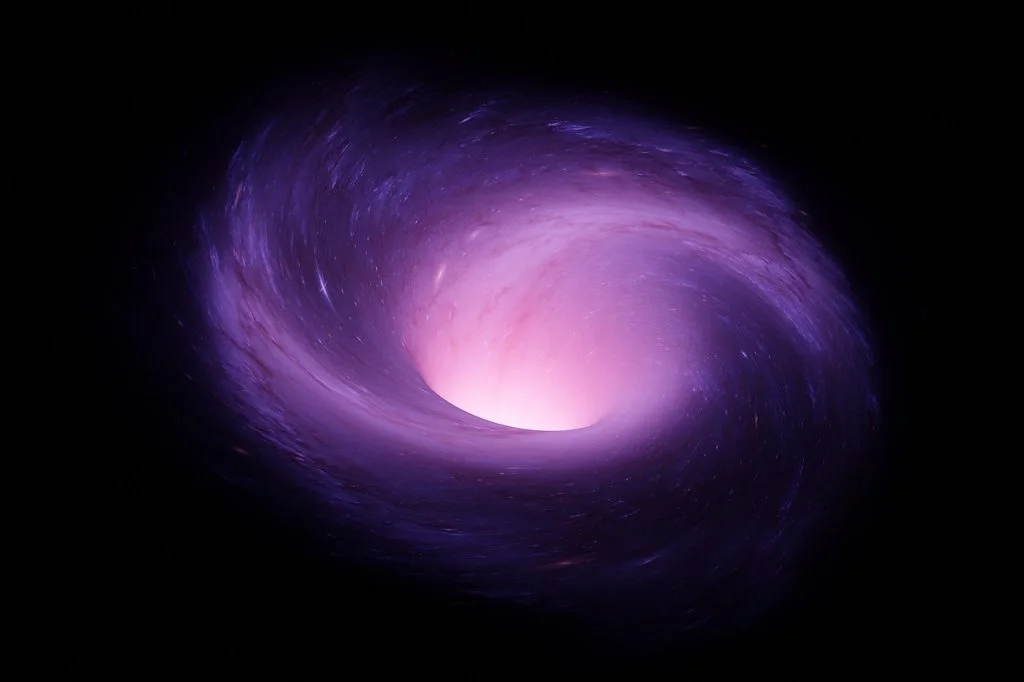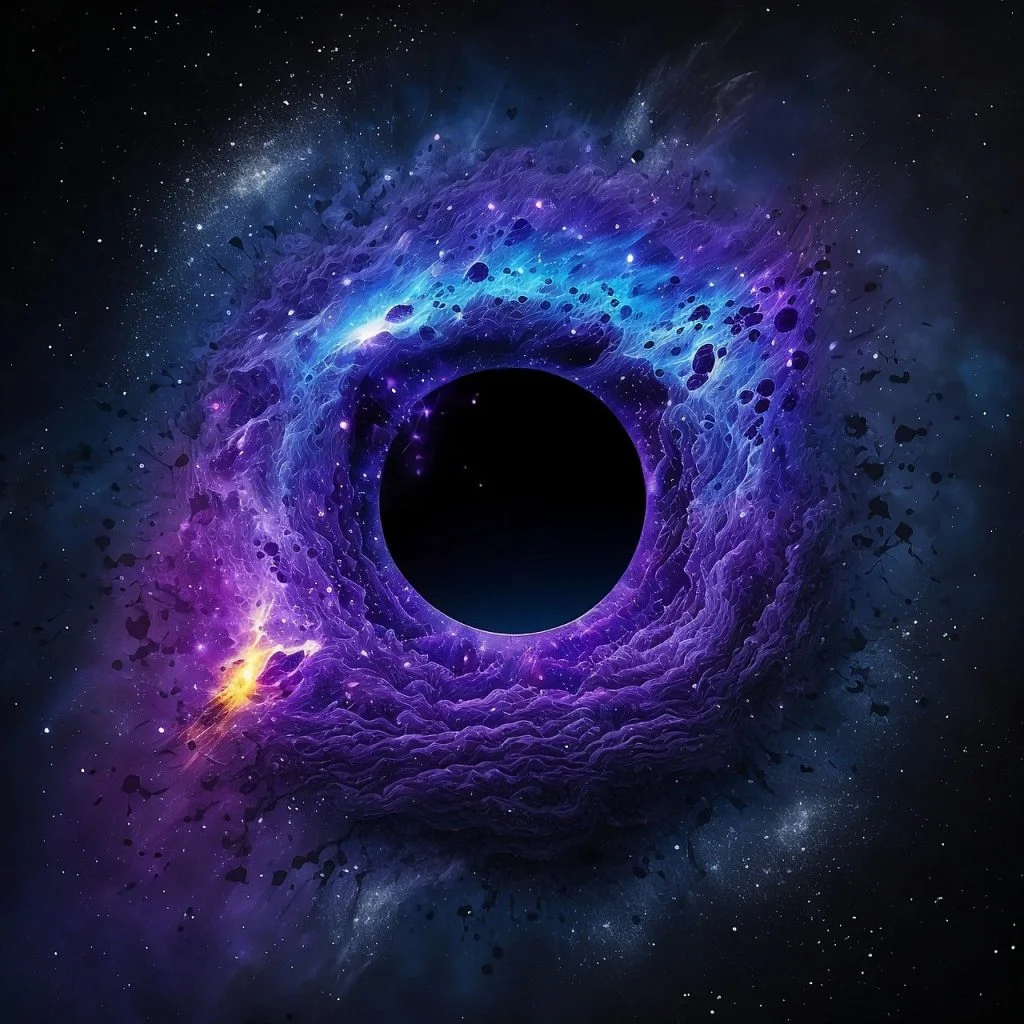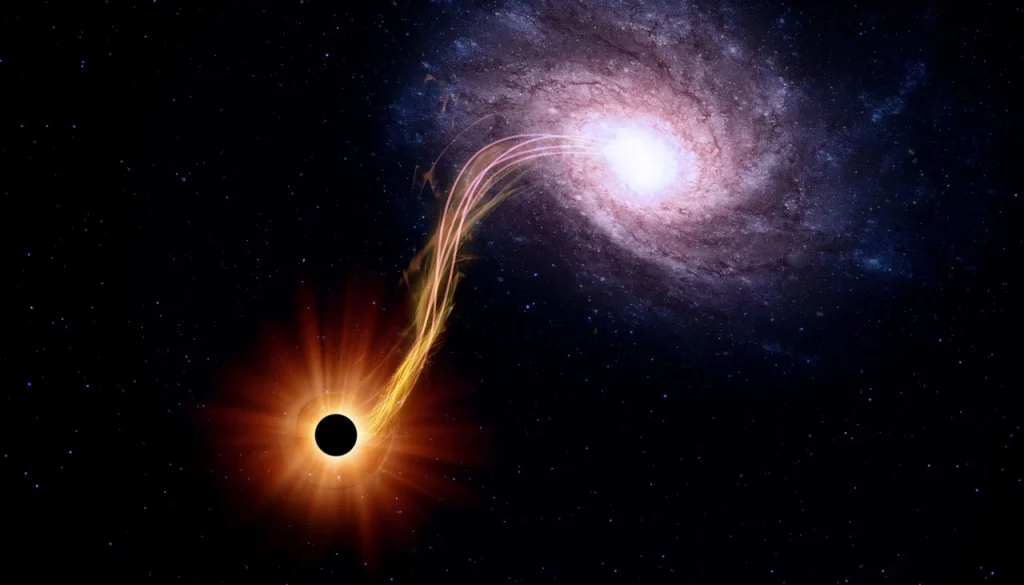Hello there! I’m your friendly neighborhood black hole enthusiast. No, really, my neighbors actually call me that because I once tried to explain singularity at a block party. Spoiler alert: It didn’t go well. But don’t worry; I’ve refined my black hole banter since then.
You see, black holes have been my passion ever since I stared into the night sky as a kid and wondered if there was a cosmic monster out there eating stars. Spoiler alert again: there is! So, why not join me on this wild ride through 50 fascinating black hole facts? Who knows, maybe you’ll find the answers to life’s deepest questions… or at least figure out why these space oddities are so ridiculously cool.
Black holes are where God divided by zero.
John Archibald Wheeler
Black Hole Facts
Get ready to be amazed by the universe’s mysterious wonders with these interesting facts about black holes. Don’t forget: there’s a quiz waiting for you at the end, so make sure to absorb every detail!
- Within our Milky Way, scientists estimate the presence of up to 100 million black holes, yet we’ve identified only a handful.
- The first conceptual leap towards understanding these phenomena came from John Michell in 1783, who mused about stars so massive that not even light could escape their gravity.
- Supermassive giants, lurking in the centers of most galaxies, can have masses equivalent to billions of suns.
- When two of them collide, they can release energy equivalent to several million supernovae exploding simultaneously.
- The nearest known black hole to Earth is located in the system V616 Monocerotis, about 3,000 light-years away.
- Event Horizons act as the point of no return around them; beyond this boundary, not even photons can climb out of the gravitational well.
- Some of them spin at nearly the speed of light, causing the space around them to twist and drag in a process known as frame dragging.
- The concept of Hawking Radiation suggests that they are not completely black but emit tiny amounts of thermal radiation, causing them to eventually evaporate over eons.
- The largest one discovered so far, TON 618, has a mass about 66 billion times that of our sun.
- Quasars, the universe’s brightest objects, are powered by supermassive ones at the heart of galaxies, outshining even the galaxies that host them.
- Scientists use a technique called gravitational lensing to detect black holes that are otherwise invisible, bending light from objects behind them into visible echoes.
- Their formation can occur immediately after the Big Bang, leading to the existence of primordial ones that predate stars and galaxies.
- Observing their mergers through gravitational waves provides insights into spacetime’s fabric and the universe’s expansion rate.

- The first direct image of one’s event horizon was captured in 2019, showing the shadow of M87 in the center of the Messier 87 galaxy.
- According to Einstein’s theory of general relativity, the singularity at their core represents a point where space and time cease to exist as we understand them.
- Information Paradox challenges physicists by questioning what happens to the information of objects that fall into them.
- Some theories propose that they could be portals to other universes or dimensions, though such ideas remain purely speculative.
- Micro ones, smaller than stellar mass, could theoretically form from high-energy collisions, although none have been observed yet.
- Their intense gravitational fields can redshift light, stretching wavelengths into the infrared or beyond, making them invisible to standard optical telescopes.
- Accretion disks around them glow fiercely, heating up to millions of degrees as matter spirals in and emits X-rays and gamma rays.
- Their collisions are the most powerful events in the universe, detectable by ripples in spacetime itself.
- Not all of them form from collapsed stars; some may result from direct collapses of giant gas clouds in the early universe.
- Intermediate-mass ones bridge the gap between stellar mass and supermassive categories, but their existence is less certain and harder to prove.
- The term “black hole” was popularized by physicist John Wheeler in 1967, before which they were known as “frozen stars.”
- Stellar mass ones can form when massive stars undergo supernova explosions and leave behind dense cores that collapse under gravity.
- Their existence suggests that space and time are malleable, conforming to the mass and energy within the universe.
- Observations of stars orbiting invisible massive objects provide indirect evidence of their presence in the cosmos.
- Some of the supermassive ones at galactic centers may have formed from the mergers of hundreds or thousands of smaller ones over billions of years.

- Kugelblitz is a theoretical concept where one could form purely from the energy of light or radiation, without the need for collapsing matter.
- The intense gravity around them can significantly slow down time, as predicted by general relativity, compared to an observer far away.
- Pulsar timing arrays may detect low-frequency gravitational waves generated by supermassive ones merging, offering new insights into their dynamics.
- Their shadows, or the dark area around the event horizon, are surrounded by a ring of light from the accretion disk and the background light they bend.
- Fermi bubbles, giant structures emanating from the Milky Way’s center, may be remnants of activity from the supermassive one at our galaxy’s heart.
- Naked singularities, theoretical entities without an event horizon, challenge our understanding of physics and the cosmic censorship hypothesis.
- Their gravitational pull is so strong that it can tear apart stars that venture too close, in a process known as spaghettification.
- Future telescopes and observatories may reveal the population of wandering ones ejected from galaxies, roaming the intergalactic medium.
- Gamma-ray bursts, the brightest electromagnetic events in the universe, may be linked to the formation of stellar mass ones.
- Their ability to merge multiple times suggests a complex life cycle involving accretion, ejection, and repeated collisions.
- By studying them, scientists hope to unlock secrets of quantum gravity, a theory that would reconcile general relativity with quantum mechanics.

- Their presence can influence the formation and evolution of galaxies, dictating the distribution of stars and the growth of cosmic structures.
- Virtual particles near the event horizon can be separated, with one falling in and the other escaping as Hawking radiation, leading to potential loss of mass over time.
- Accretion flares occur when a star is torn apart, and its material heats up, producing a bright, temporary burst of light.
- Galactic nuclei surveys reveal that the mass of the central supermassive one correlates with the galaxy’s bulge mass, hinting at co-evolution.
- Their study combines disciplines of astrophysics, quantum mechanics, and cosmology, making it a frontier of interdisciplinary research.
- Stellar dynamics around them in galactic centers can reveal their mass, spin, and the effects of relativity on surrounding objects.
- Simulations of their growth and evolution help scientists understand the early universe and the formation of large-scale structures.
- Despite their name, they are not empty voids but rather regions of intensely concentrated mass and energy with profound effects on the cosmos.
- Event Horizon Telescope (EHT) collaborations aim to image more of them, further unveiling the mysteries of these cosmic phenomena.
- Quantum entanglement might play a role in solving the information paradox, suggesting that information could be preserved, not destroyed, challenging our understanding of physics at a fundamental level.
- The possibility of miniature black holes created in particle accelerators like the Large Hadron Collider (LHC) has intrigued scientists, though none have been observed, reflecting the intersection of cosmic phenomena and human-made experiments.
Black Hole Myths

Now that we’ve explored the facts, let’s delve into the myths about black holes and separate fiction from truth.
- Black Holes are Cosmic Vacuums that Suck in Everything Nearby
Black holes don’t actively “suck” objects any more than any other massive object in space. Their gravity attracts matter, like stars and planets, but only if these objects get too close. - Black Holes are Infinite Voids
Contrary to popular belief, black holes are not empty voids. Black holes pack a huge amount of matter compressed into a very small area, creating an intense gravitational pull. It’s like fitting Earth’s mass into a tiny marble. - Anything That Enters a Black Hole is Destroyed Instantly
If you ventured into a black hole (not recommended!), it wouldn’t instantly destroy you. The process, known as spaghettification, happens gradually as gravitational forces stretch and squeeze you. - Black Holes Last Forever
Black holes aren’t eternal. They slowly lose mass through a process called Hawking radiation. It’s like a slow leak in a tire; eventually, over an incredibly long time, they can evaporate away. Think of them having a cosmic expiration date! - We Can See Black Holes Directly
We can’t see black holes the way we see planets or stars. They’re invisible because their gravitational pull is so strong that even light can’t escape. However, we can observe the effects they have on nearby matter, like stars orbiting nothing or light bending strangely. It’s like seeing wind by the way it moves the leaves on a tree.
No products found.
Black Hole Quotes

Let’s discover some famous quotes about them. Let me know which one was your favorite in the comments.
Black holes ain’t as black as they are painted. They are not the eternal prisons they were once thought.
Stephen Hawking
Stephen Hawking reflects on the nature of black holes, suggesting they might not be as inescapable and definitive as previously believed.
A black hole is a place where God broke the laws of physics.
Carl Sagan
Carl Sagan highlights the extraordinary and seemingly paradoxical nature of black holes in the realm of physics.
The warped side of the universe—black holes, wormholes, and time warping—touches on some of our deepest existential questions.
Kip Thorne
Kip Thorne emphasizes how black holes and similar cosmic phenomena connect to profound philosophical and existential inquiries.
A black hole is a ballet of forces between the ferociously compact, dense remnant, and the vast region of space around it.
Janna Levin
Janna Levin poetically describes the dynamic and intense interaction between a black hole and its surrounding space.
The relentless pull of a black hole stretches the very fabric of space and time in the most extreme way possible.
Brian Greene
Brian Greene encapsulates the intense gravitational force of black holes and their impact on the fundamental elements of the universe.
Black Hole FAQ

From the depths of insightful quotes to the enigmatic realms of space, it’s time to enter the FAQ zone. As you explore the interesting facts of black holes, remember that each detail is a stepping stone to success at the upcoming quiz.
- Who Discovered Black Holes?
Black holes were first theorized by John Michell in 1783. Karl Schwarzschild, using Einstein’s theory in 1916, detailed their properties. John Wheeler coined the term “black hole” in 1967. - How Does a Black Hole Work?
A black hole has such strong gravity that nothing, not even light, can escape. A singularity, surrounded by the event horizon, forms when a lot of mass concentrates in a small area. - Do Black Holes Have Gravity?
Yes, black holes have incredibly strong gravity due to their massive concentration of mass. Their gravitational pull is what defines them, though from a distance, their gravity is like any other object of the same mass. - Are Black Holes Rips in Space and Time?
Not quite. Black holes are massive objects with gravity so strong that it distorts space-time around them, but they don’t actually ‘rip’ it. - Are Black Holes Infinitely Dense?
Scientists theorize that black holes might have an infinitely dense core, the singularity, where the physical laws as we know them break down and compress a huge mass into a tiny space.
No products found.
Black Hole Trivia

Welcome to the ultimate black hole quiz! If you don’t answer correctly, you might find yourself sucked into a realm of endless trivia questions!
Conclusion
As we wrap up our cosmic tour of black holes, remember, these are not just galactic monsters gobbling up everything in sight. They’re more like the universe’s enigmatic magicians, performing gravity-defying tricks while holding the secrets of the cosmos up their sleeves.
So, before you say adios, think about this: If Black holes had a Yelp review, what rating would you give them and why? Drop your thoughts in the comments below; let’s rate these mysterious cosmic phenomena together!
3 Sources Used For This ArticleStephen Hawking: Black holes – Speakola
No Black Holes Don’t Suck Everything – Forbes


